zandpoortvest 10
be 2800 mechelen
t +32 15 336 336
m (b) +32 478 811 441
m (d) +32 475 477 478
Thomas Huber @ Faculty Club Leuven, 2020
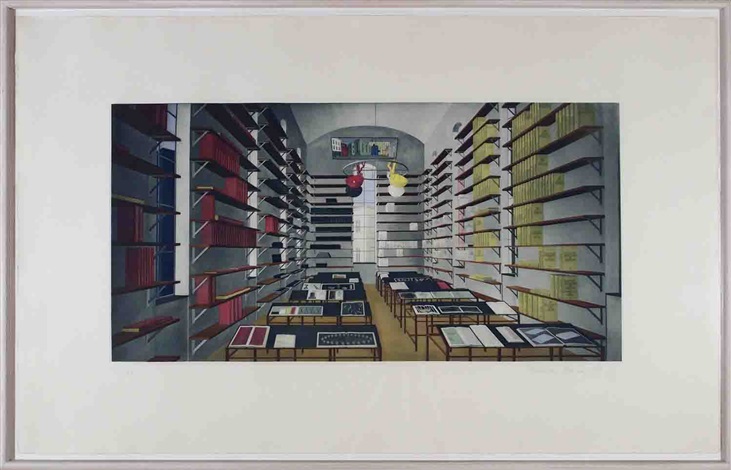
Die Bibliothek, 1988, color etching & aquatint, 39 x 77,5 cm, € 2.000
De bibliotheek. Kleurets met aquatint en aquarel. 1988. 39 x 77,5 cm (66 x 106 cm). Getekend, gedateerd en genummerd.
Exemplaar 77/120 - Dit belangrijk grafische werk is gepubliceerd door Les Amis du Centre Pompidou in Parijs. - Gedrukt en gekleurd door Pierre Brocher in Beaumont de Gatinas. - Op koperplaatpapier van "Hahnemühle". - Met droogstempel en de stempel van de drukker op de achterkant. - Zeer fijn en royaal ingelijst.
Thomas Huber: selected works
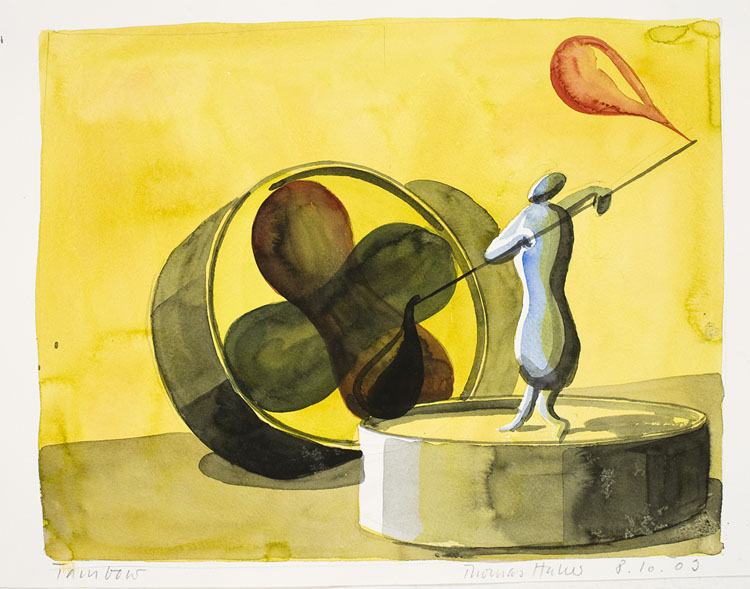
Tambour [8.10.09], 30,8 x 40,9 cm, 2009, aquarel, €4.400
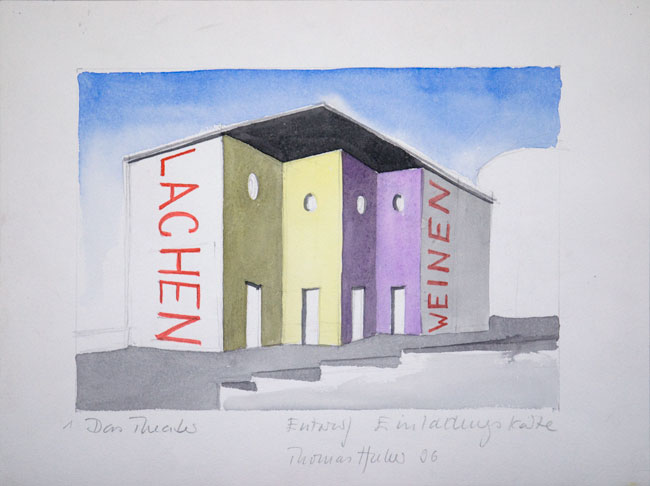
Das Theater | Entwurf Einladungskarte, 30 x 40 cm, 1996 aquarel, € 3.900
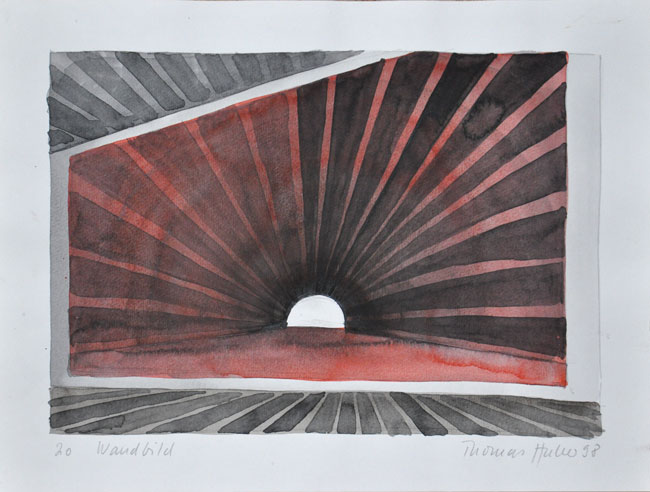
Wandbild, 30 x 40 cm, 1996, aquarel, € 3.400
Since the early 1980s, the Swiss artist Thomas Huber has been producing a body of pictorial work that reveals a deep link with writing and language. Not so much because of the signs we see in his paintings, or the words or even whole expressions we can read there—there are indeed many examples of that. Rather it is because, along with his activity as a painter, Huber is also the author of texts which he is in the habit of delivering like a lecture or talk, standing before the images he composes. The artist thus reconnects with and explores the link—consubstantial with art history—between the painted figure and text.
Thomas Huber’s pictorial output, from the start of his career until today, has known no evolution (even less any revolution). It has never shown any change either in its style or its themes, and thus conjures up an image of painting that from the outset has been comfortably settled in its immutable identity, even a kind of timelessness. Huber’s pictures generally represent the interiors of a monumental architecture in which scenes play out that very often evoke a waking dream. The works show imposing buildings in cities that are frequently empty and even—why not—utopian (Huber has moreover created a fictional city called Huberville, the subject of several of his canvases, while Giorgio de Chirico, that painter of silent, deserted towns, is one of his favorite artists). They also feature pictures, lots of pictures, painted into other pictures. The picture indeed seems to be the object that doubly frames his experiments. Even though Huber explores a broad range of media and techniques for displaying art (film, video, installations, slide shows, drawing, watercolor, painting on canvas), it is the painted picture that he uses most often; it is the true means by which he gains access to the world of the real and the imaginary. Thus, just under four hundred paintings make up the retrospective that Mamco has mounted, where the title Vous êtes ici (You Are Here)—that shorthand expression for orienting pedestrians on public city maps— informs visitors of a kind of duty to be present in front the images, or rather of the fact that the images make it possible for visitors to genuinely be there. The show aims to be instructive and is laid out chronologically, beginning on the museum’s fourth floor. It covers a period of around thirty years in the artist’s output. The canvases are arranged in groups of works, each bearing a title like La poste (The Post Office), La bibliothèque (The Library), or Sonnez les matines (Morning Bells Are Ringing). To show these paintings today, the museum has recreated the original forms of display, the very ones that the artist devised for the works’ initial presentation. The exhibition also includes scale models and installations, as well as sketches, explanatory drawings, and quotes by the artist, which are featured on the walls. Finally, five panels painted by Huber and spotting images of Huberville, the artist’s fictional town, have been installed in the city, both around Mamco and in a neighborhood that is fairly close to the museum geographically, a way of bringing the artist’s imagination to the heart of Geneva.
Huber has also devoted a speech to each group of works. His painting is in fact deeply linked with the textual and specifically the texts he writes for his visual works and which he normally delivers in front of his canvases during his show openings. At the very start of his painting career, in fact, Huber didn’t mount exhibitions strictly speaking. Rather he would give a lecture in front of one of his images before reclaiming it and removing it from public view. Mamco is publishing an anthology of these texts in conjunction with the museum’s retrospective (Mesdames et Messieurs. Conférences 1982-2010). The writings are fictional stories, autobiographical episodes, philosophical considerations on art and existence, daydreams, digressions that take images as their starting points, Russian doll effects for the eye, fantastical views of paintings, and more… They show the degree to which seeing, reading and hearing are closely associated in Huber’s art, and that one cannot fully function without the others. In this way Huber reconnects with an ancient law of art history, which he reinvents and shifts to new ground, namely ut pictura poesis (“as painting, so poetry”), a formula that implies that painting, to be truly great, must be like poetry. For Thomas Huber, it is now language that is the picture’s alter ego, and both forms enjoy a full existence in the Vous êtes ici of the artist’s lecture.
Thomas Huber was born in 1955 in Zurich; he lives and works in Berlin.
Thomas Huber @ Art Brussels 2016
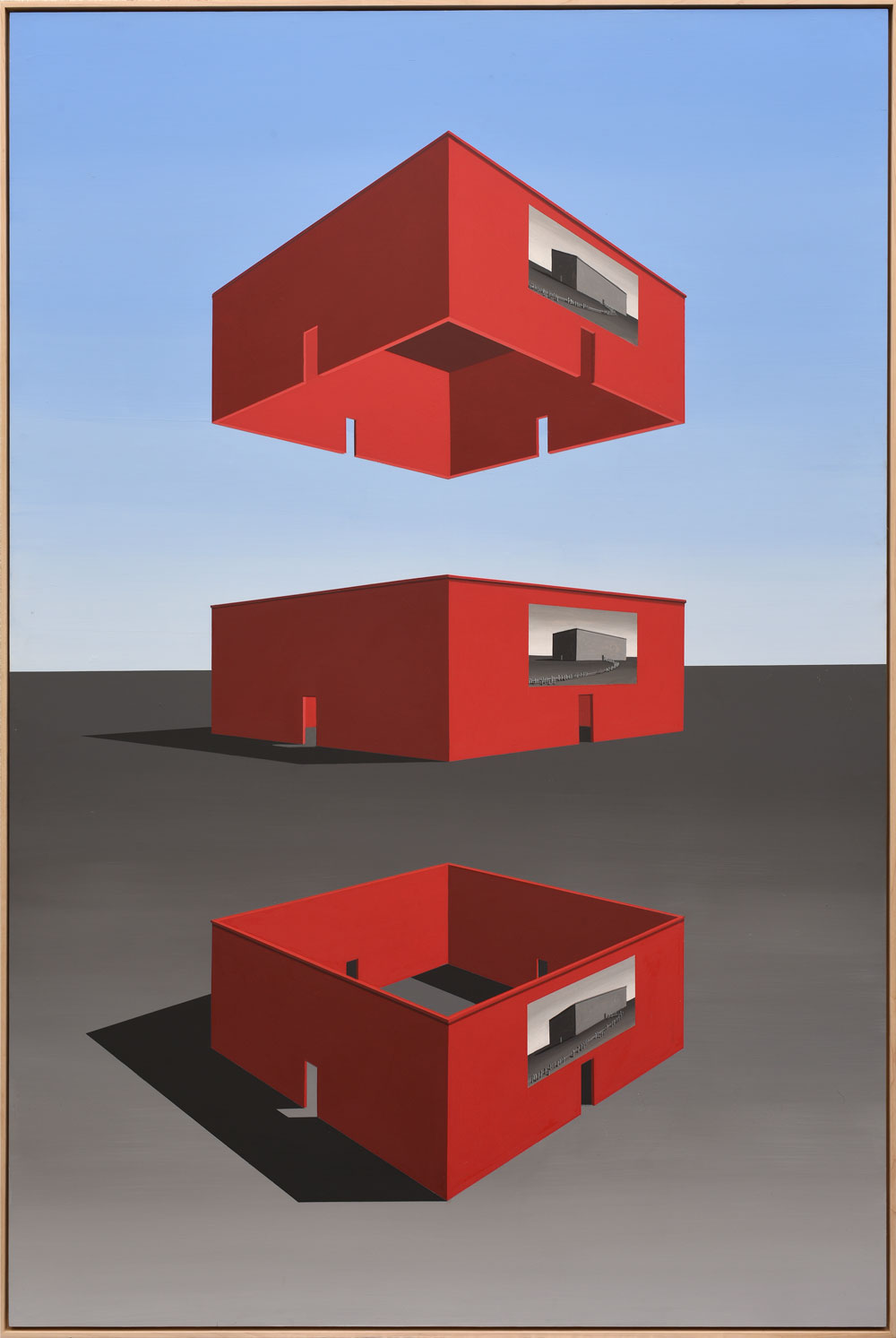
Besucherandrang, 2015, oil on wood, 225 x 150 cm
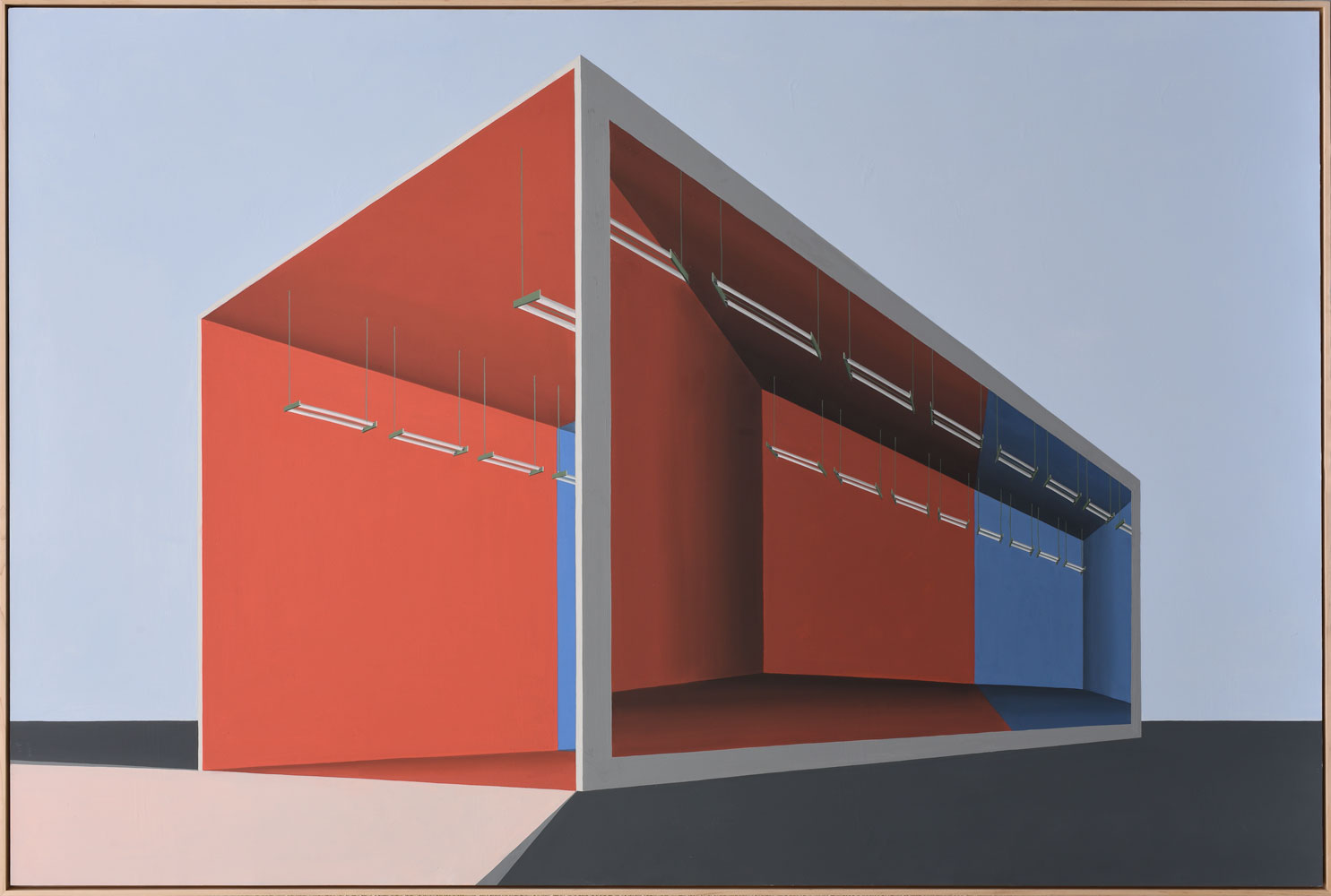
Halle Rot Blau, 2015, oil on wood, 150 x 225 cm
Thomas Huber De Rode Fries | Der Rote Fries | The Red Frieze
gratis boek 72 pag., met alle schilderijen en duiding, hard cover, voor elke bezoeker zover beschikbaar
lees hier de digitale versie van het e-Boek met alle schilderijen
Meer afbeeldingen en tekst hier - more works and all texts here
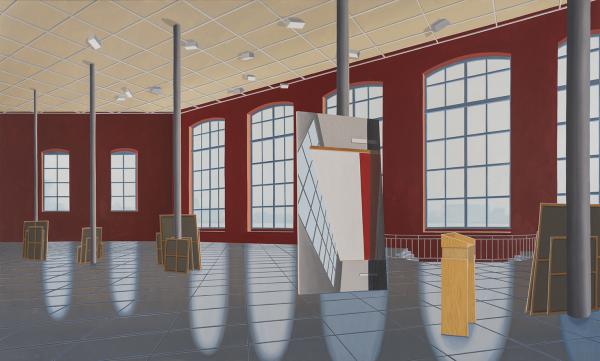
"Le Bazacle ", 2014
Öl auf Leinwand, 2014, 200 x 330 cm, Standort: Galerie Transit, Mechelen, TH-2014-B-01
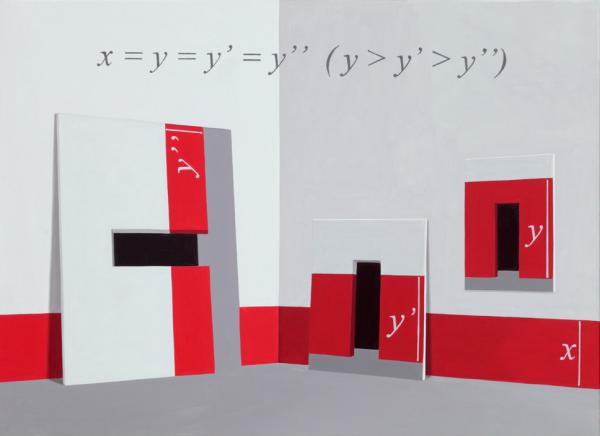
"Der Rote Fries XVII", 2013
Öl auf Leinwand, 80 x 110 cm, Thomas Huber, Berlin, TH-2013-B-26
Meer afbeeldingen en tekst hier - more works and all texts here